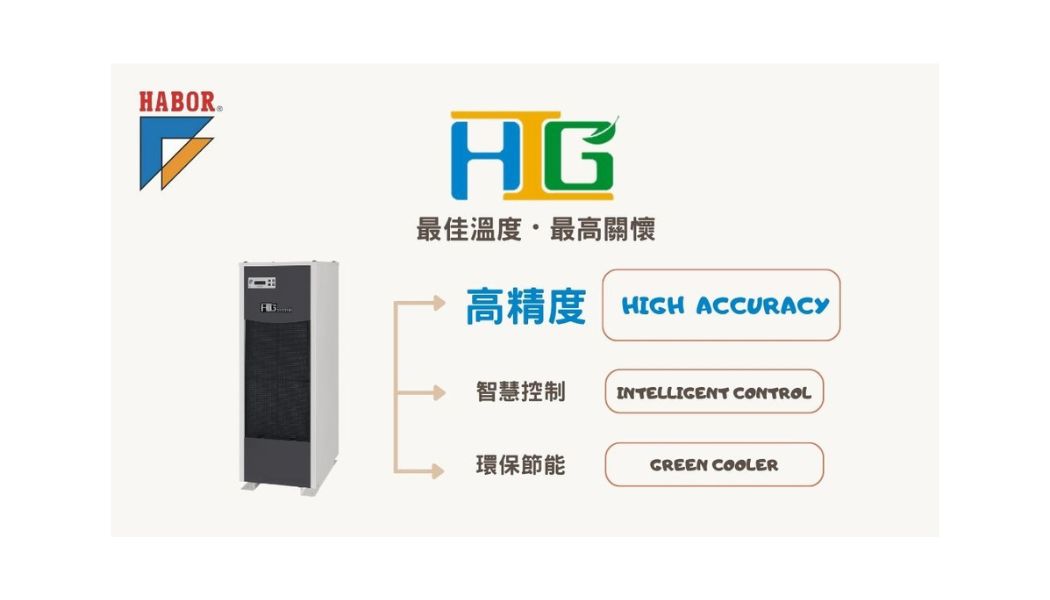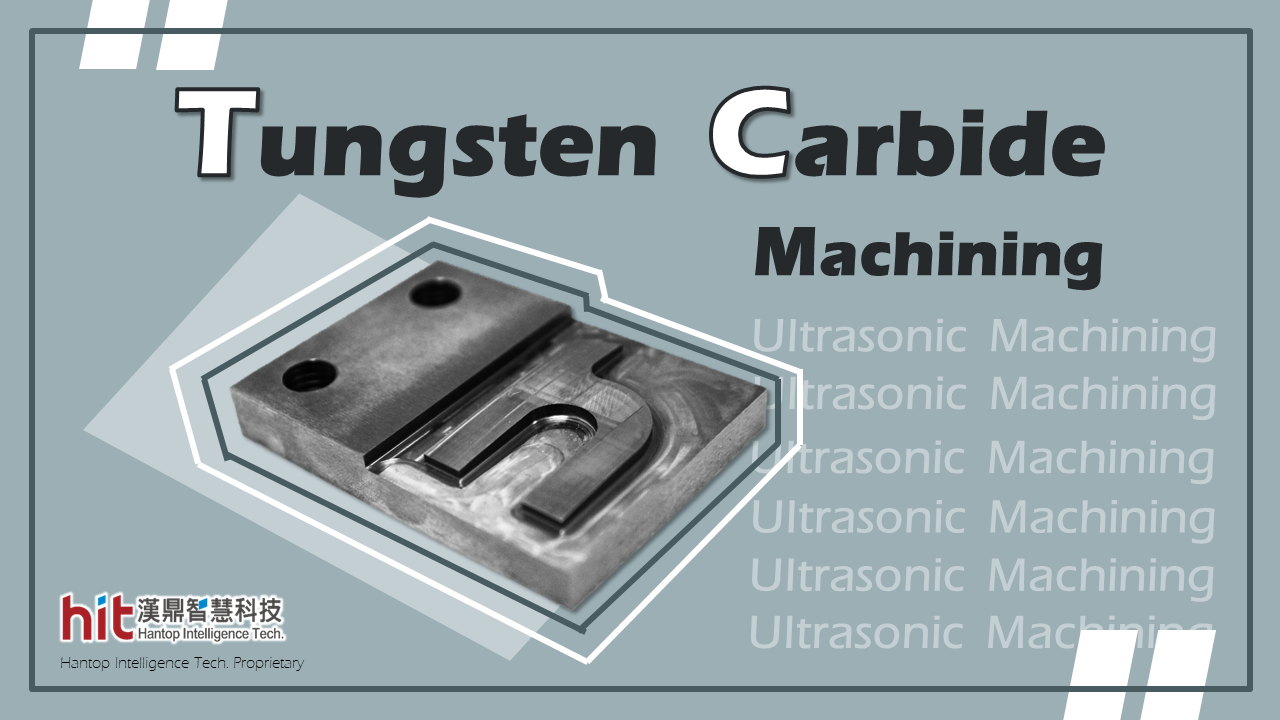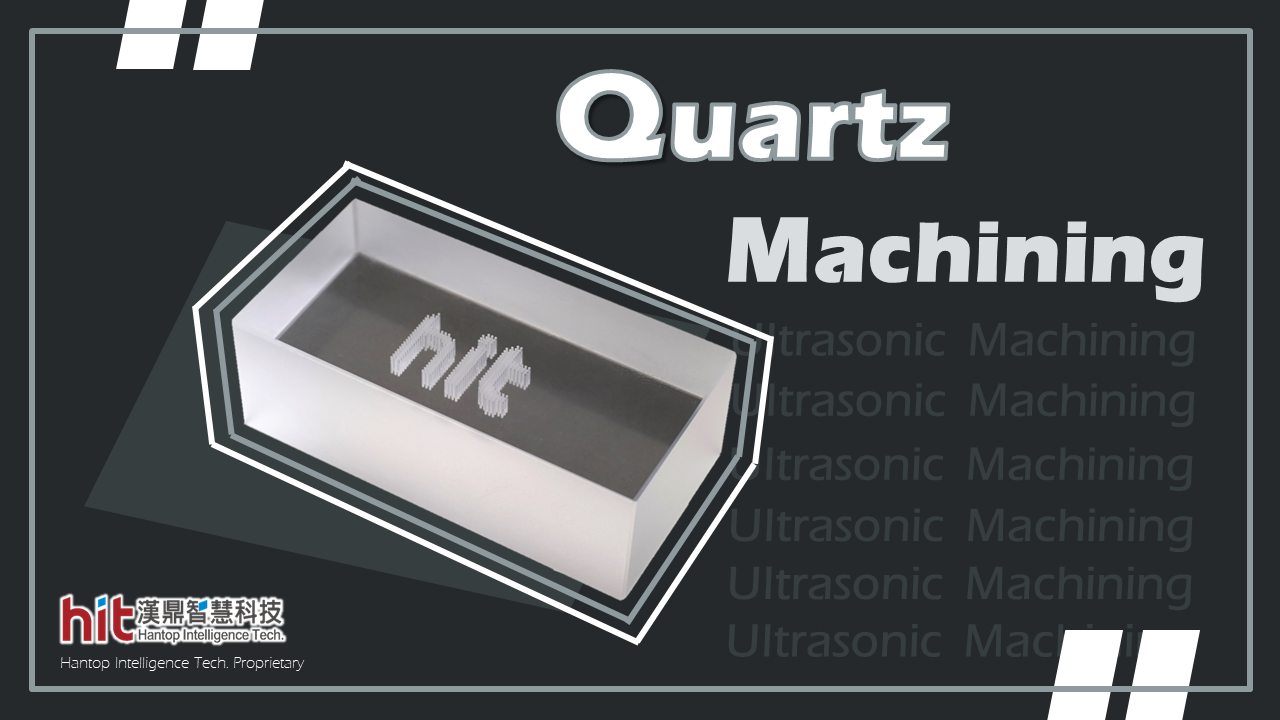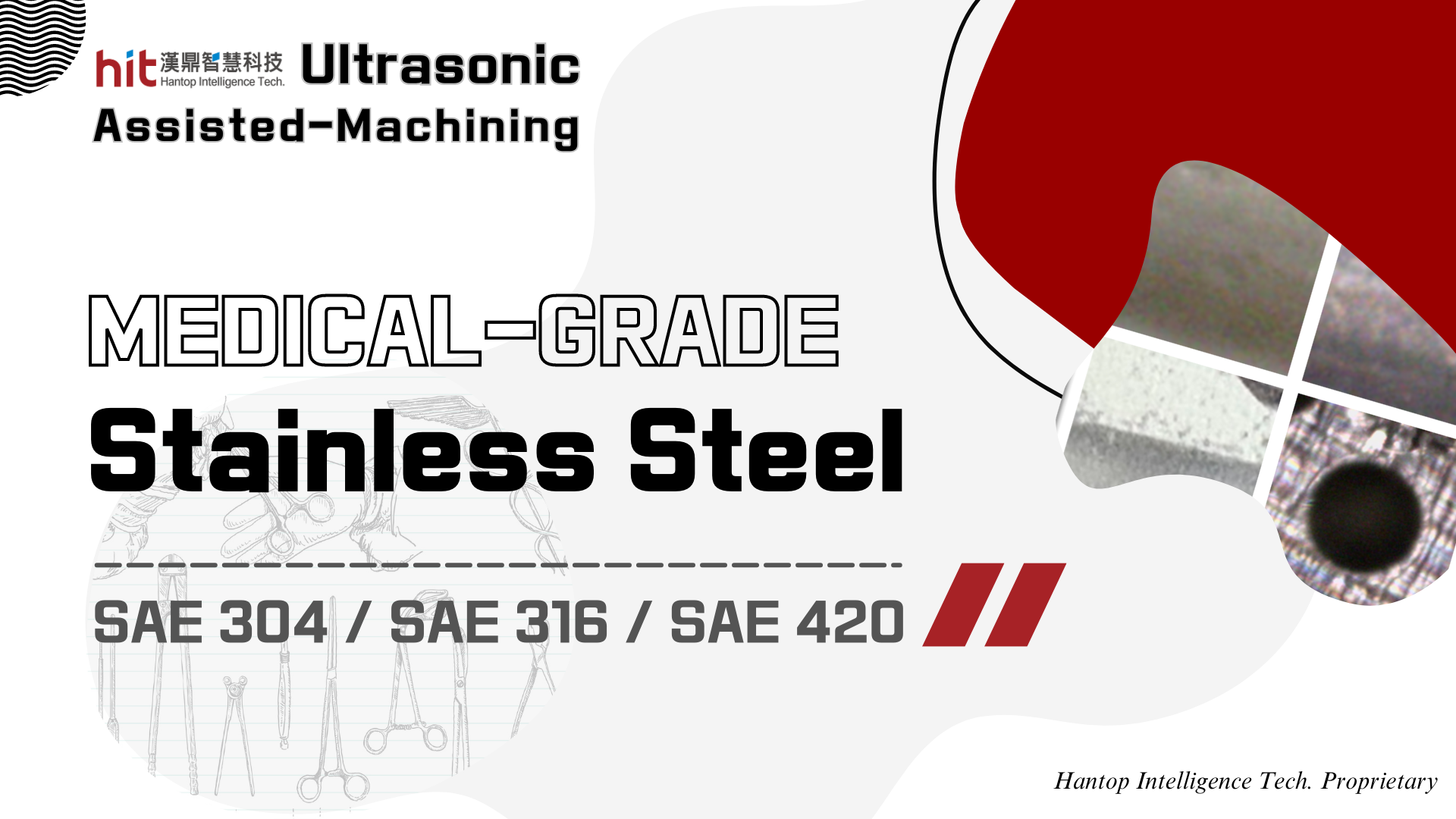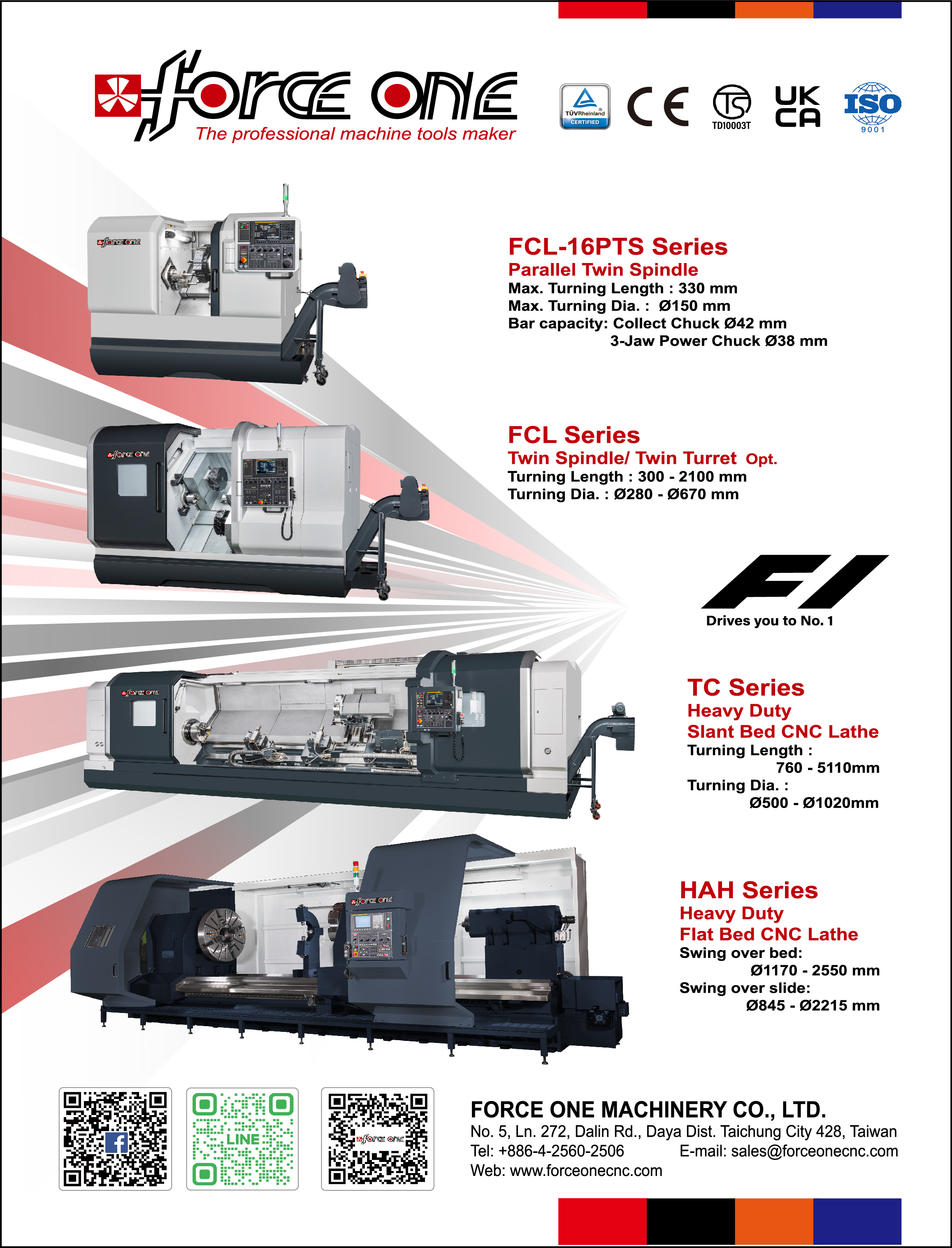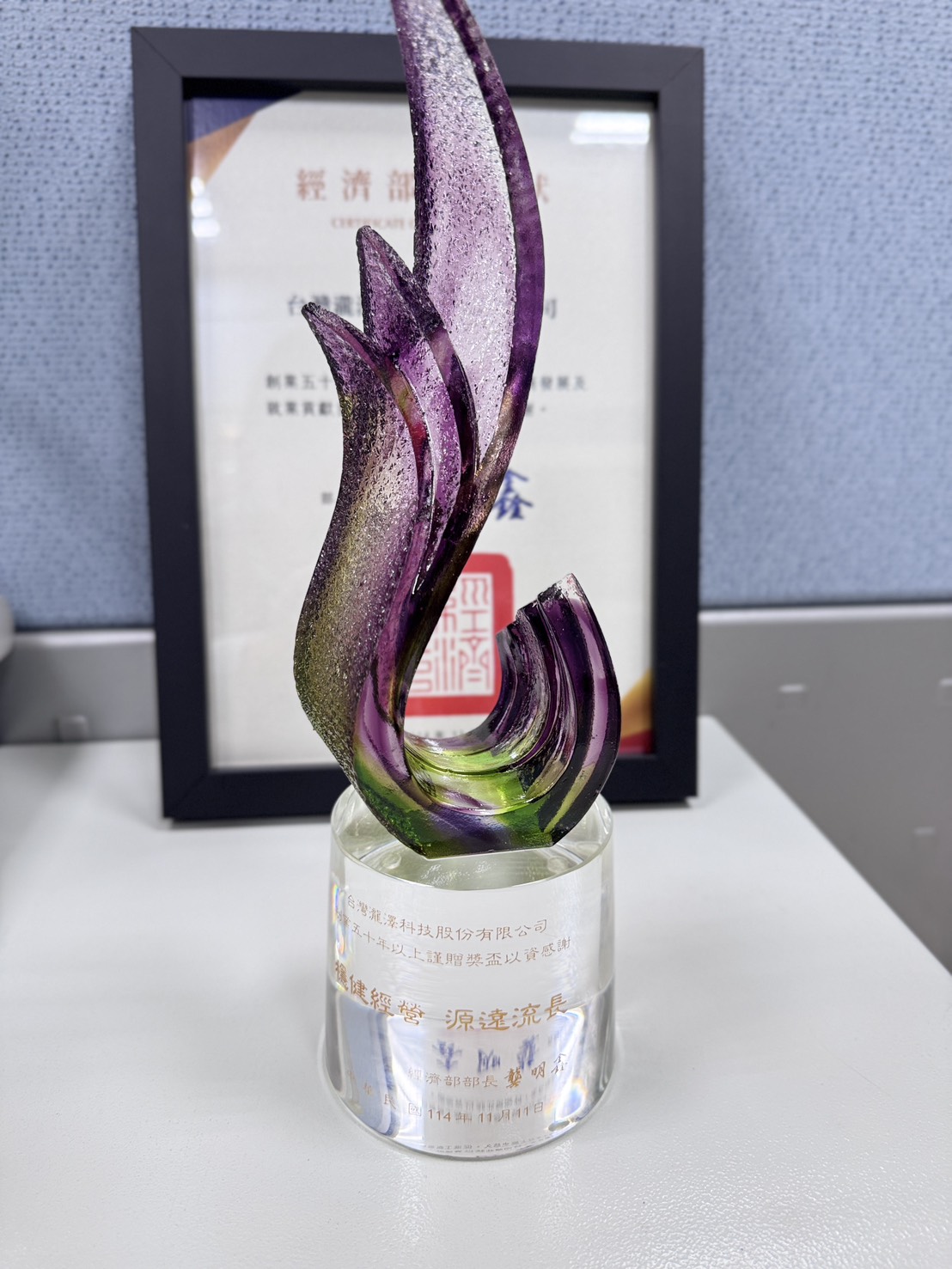Tag Result
#ESG
We offer the best for your needs - a high-accuracy temperature control systemIntelligent control innovative equipment, towards #Intelligence Industry 4.0Friendly to Earth, we are also always keep in our mind #ESG Corporate SustainabilityLet's start protect the earth! The best temperature, the high care, HABOR gives you the best promise.HIG is our three major business concept. High accuracy controlInnovative technology for temperature controlHigh accuracy temperature control ±0.01K Intelligent ControlSmart remote installation and operationMonitoring System for Energy and Condition Environmental protection and energy savingLow refrigerant consumption for Environmental ProtectionHigh efficiency Motors for Energy-savingWelcome to contact us. you also can visit our website to find more products! https://www.habor.com/
Carbon emissions cause the greenhouse effect in polar regions. Severe damage has affected polar bears' habitat, putting them under the threat of extinction.Global warming has made the earth feverish!How to improve carbon emissions become the most authentic feedback from enterprises to nature.Habor launches the new HIG DC Inverter Cooler, responding the latest new concept for environmental protection.We are good at not only intelligent mode and high-accuracy control, but also second to none in "Environmental Protection and Energy Saving".Let us tell you why:1. The low refrigerant effectively reduces the GWP value and reduces the refrigerant usage rate by more than 30%.2. Use high-efficiency (above IE3) motors to reduce energy consumption and carbon emissions.DC Inverter Cooler provides the best temperature for the machine tool, keeping up with the trend of environmental protection and energy saving of the times!Take the step sustainable development with Habor!Let's protect polar bears! https://www.habor.com/
How to make your machine tool stand out in the Industry 4.0 Mode?Then, you need a Cooler to help you control the temperature.But, how should we choose?In these decades, we have continued to develop and innovate.From the beginning only "Control with ON-OFF" - maintains the temperature at ±1KTo the "PID control" and the latest "Frequency Conversion Control" - it can control the temperature range to ±0.01KNow that keeping the range between ±0.01K is the same, isn't it superfluous?No~ No~First, we can imagine the cooler as a person.Then, how to keep the blood (water or oil in the machine) flowing in the body? The answer is that you need a strong heart. And our Compressor is that strong heart. The previous generations used the constant frequency compressors, but our third generation use inverter frequency compressors.Why DC Inverter Cooler? First, we can improve the accuracy of our temperature control from ±1K to ±0.01K. Second, our compressor is updated from constant frequency to inverter frequency. Third, from the beginning our loading rate has been maintained at high rate of consumption.Now, our rate of consumption is provided based on the current desired loading rate.Habor's Inverter Cooler makes your machine tool more perfect. Welcome to visit our website for more information: https://www.habor.com/搜尋 🔎 @haborcooler
加入《HABOR哈伯》LINE好友 了解更多😆
https://page.line.me/haborcooler
About Tungsten Carbide F1. brazed plates made of Tungsten Carbide materialTungsten Carbide, also known as Cemented Carbide, is an alloy of tungsten and carbon. It is a metal-like substance and is approximately 2 to 3 times as rigid and dense as steel. Tungsten Carbide is often referred to as a Hard Metal, since it possesses very high hardness in relation to other metals. The Mohs hardness rating of Tungsten Carbide is around 8.5 ~ 9, and it is an extremely stable substance which does not oxidize under normal temperatures and keeps its stable characteristics even in severe environments.Tungsten Carbide’s hardness and resistance to heat make it an ideal material for cutting tools and high-performance wear parts to be used in the environments under high temperature and high speed. Due to its exceptional hardness and wear resistance, Tungsten Carbide has a wide range of application in many industry sectors such as metal machining, wear parts for mining, metal forming tools, cutting tips for saw blades, etc. How Tungsten Carbide Machining Works? Owing to the extremely high hardness of Tungsten Carbide, it is impossible to be machined by traditional machining process such as turning, milling, or drilling. Though it can be machined by special tools, including PCD, CNB, and ceramic tools, these cutting tools will easily wear out and lose the sharpness.F2. metal material grinding processGenerally, Tungsten Carbide will be grinded with diamond tools or machined by electrical discharge machining (EDM). Though Tungsten Carbide is machinable by using these machining methods, the machining process is destined to face multiple difficulties and challenges. Difficulties in Tungsten Carbide Machining Tungsten Carbide Machining Challenges in Quality and Tool LifeTungsten Carbide is incredibly hard and difficult to machine. Its hardness and brittleness make it easily cracked or chipped during the machining process, and it also chips the cutting tools very easily. Generally, it is impossible to be machined by traditional machining process. Though it can be machined by special tools, such as PCD, CNB, and ceramic tools, these cutting tools lose their sharpness easily.F3. carbide cutting tools for industrial applications Tungsten Carbide Machining Challenges in EfficiencyThe control of vibration and cutting force is extremely important to machining Tungsten Carbide, in virtue of its high density, rigidity, and brittleness. If the vibration and cutting force are not well-controlled, it is very subject to micro cracks and fragmentation. Therefore, the machining process is often extremely time-consuming and has constantly been tormenting the processing manufacturers when dealing with this material. What Does HIT Ultrasonic Machining Bring to Tungsten Carbide Machining? F4. Tungsten Carbide machining processHIT’s ultrasonic-assisted machining technology provides the superimposition of the tool rotation with a high-frequency oscillation in longitudinal direction, generating over 20,000 times of micro-vibration per second. The mechanism helps reduce cutting forces and facilitates chip removal process.F5. HIT's ultrasonic machining technology with high-frequency oscillation in longitudinal direction facilitates chip removal processThe reduction in cutting forces not only decreases frictions between tools and workpieces, but also allows feed rates to be increased. This greatly improves the quality of workpieces and the stability of tool life, and saves quite an amount of processing time.F6. HIT's ultrasonic machining technology helps reduction in cutting force, bringing more stability in tool lifeFacilitating chip removal process diminishes frictions on both tools and workpieces caused by excessive amount of chips. HIT’s ultrasonic high-frequency micro-vibration allows chips to break easily and lessens the occurrences of entangled chips. This also displays a great benefit to both the quality of workpieces and the stability of tool life.More information on HIT Ultrasonic Machining Technology Two Successful HIT Cases of Tungsten Carbide Machining Tungsten Carbide Machining Case 1 : (Slot) Trochoidal MillingF7. Tungsten Carbide ultrasonic-assisted (slot) trochoidal milling workpieceWith HIT ultrasonic, the high frequency micro-vibration allows the tool to constantly lift from workpiece. This brings better inflow of cutting fluid, offering better cooling effect and easier chip and carbonized diamond powder evacuation.F8. HIT ultrasonic-assisted slot trochoidal milling of tungsten carbide achieved better surface qualityUnder the same cutting parameters, with HIT ultrasonic, it helped reduce the surface roughness of the slots. There was no obvious tool marks or scratches left on the surface compared to that without ultrasonic.F9. HIT ultrasonic-assisted slot trochoidal milling of tungsten carbide brought better chip evacuation, preventing chips or carbonized diamond powder stuck on the toolBetter chip and carbonized diamond powder evacuation helps reduce friction between tool and workpiece, which then reduces the cutting forces. This not only prolongs the tool life, but also helps enhance over 2x higher material removal volume.More information on Tungsten Carbide: (Slot) Trochoidal Milling Tungsten Carbide Machining Case 2 : Threading & GrindingF10. Tungsten Carbide threading & grinding workpiece HIT carried out threading (M10x1.5P) and grinding (h-shape) on a 50x70x10mm Tungsten Carbide workpiece. Using HIT’s ultrasonic tool holder HSKA63 with the integration of CTS, ATC, and CNC automation system, HIT completed the entire machining process within 5 hours, compared to over 12 hours by the traditional EDM process. The surface roughness of the h-shape grinding went from Ra > 0.8μm to the average of Ra < 0.1μm.This feature is widely applied in the Precision Machinery industry, especially being used for Tungsten Carbide molds and punches.More information on Tungsten Carbide : Threading & Grinding Tungsten Carbide Machining FAQ Q1 How do I know the tools I used to machine Tungsten Carbide can be fitted into HIT’s ultrasonic machining module system?A1 HIT’s ultrasonic machining module has the ability to automatically scan for the proper frequency of the corresponding tool (within the standard frequency range of 20 – 32kHz). The system can even further adjust the frequency range, depending on specific tools used by the clients. Over the years, most of the tools in general have been validated to be available for HIT’s ultrasonic machining module system.F11. HIT ultrasonic machining driver moduleMore information on HIT Ultrasonic Machining Module Q2 How to adjust feed rates and amplitude when I start machining Tungsten Carbide with HIT’s ultrasonic machining module system?A2 HIT aims to help clients face the challenges in Tungsten Carbide machining. This includes providing the optimum machining parameters and services to ensure clients having the best experiences in using HIT’s ultrasonic machining module system. It is not just buying a product from HIT, but obtaining the knowledge, services, and efforts from the most professional team.F12. HIT ultrasonic tool holders Tungsten Carbide Machining? Choose HIT Contact us if you are looking for a better way to improve machining efficiency, quality, and tool life.
What is Quartz and its Common Use? Quartz Material PropertiesQuartz can be manufactured into Quartz Glass, which is sometimes referred to as fused quartz or fused silica. The material is composed of silicon dioxide (SiO2), which has very low thermal expansion and can maintain its dimensional stability even at elevated temperatures. Quartz glass has excellent electrical insulation property and is inert to attacks from all kinds of acids, even in very high concentrations, except for hydrofluoric acid. The material has high compressive strength, but also displays high hardness and brittleness. Defects on the surface may have a serious impact on its overall material strength.References :Top-Seioko - Fused silica : Key properties & popular applicationsAZO Materials - Fused Silica/Quartz Glass - Properties and Applications of Fused Silica/Quartz Glass by Goodfellow Ceramic & Glass DivisionIQS Directory - Quartz glassHeraeus - Properties of fused silica Common Applications of QuartzSince quartz glass has a wide transparency range and superior light transmittance, this makes it an ideal material for multiple optical applications in optoelectronics industry, such as prisms, lenses, etc. Its material properties also gives it a wide range of applications in semiconductor industry, such as quartz ring, quartz crucible, quartz wafer boat, etc. F1. silicon wafers in plastic wafer boat (quartz wafer boat is also applicable) How Quartz Machining Works? Quartz Machining 1 : Milling F2. industrial material machining milling processMachining quartz glass can be done using high precision CNC milling machines that are designed to machine ceramics and materials similar to glasses in terms of brittleness. Though quartz glass is also a hard and brittle material, its machinability is relatively good. Quartz Machining 2 : Cutting F3. industrial material cutting with high pressure water jetDue to the hardness and brittleness of quartz glass, machining it may need diamond cutting tools and the machining parameters must be optimized. Band and wire saws, chop saws, CO2 lasers, and water jet cutters are common tools used to cut quartz glass. Quartz Machining 3 : Drilling F4. industrial material drilling on milling machineThe material can also be drilled by using a diamond drill. In order to prevent the tools from premature wear-out, it is important to make sure the proper cooling device is available. Difficulties in Quartz Machining Quartz Machining Challenges in QualityThough quartz glass possesses high compressive strength, it is still a very hard and brittle material. Even small defects on the surface may have serious impact on its overall material strength. Especially in quartz glass drilling, there will easily be serious subsurface damage with improper cutting force. Another downside of machining quartz glass is that machining it produces great deal of powder and clogs the diamond cutting tools. This not only affects the stability of tool life, but also severely damages the quality of the workpiece. Quartz Machining Challenges in EfficiencyThough quartz glass is considered to have relatively good machinability, it is a hard and brittle material. The control of cutting force is important when machining quartz glass, since it may be easily chipped or cracked under excessive cutting force. This usually results in a very time-consuming machining process, and leaves the processing manufacturers a huge headache when dealing with this material. F5. the challenge of enhancing machining efficiency while maintaining required quality What Does HIT Ultrasonic Machining Bring to Quartz Machining? HIT’s ultrasonic-assisted machining technology provides the superimposition of the tool rotation with a high-frequency oscillation in longitudinal direction, generating over 20,000 times of micro-vibration per second. The mechanism helps reduce cutting forces and facilitates chip removal process.F6. HIT's ultrasonic machining technology with high-frequency oscillation in longitudinal direction facilitates chip removal process The reduction in cutting forces not only decreases frictions between tools and workpieces, but also allows feed rates to be increased. This greatly improves the quality of workpieces and the stability of tool life, and saves quite an amount of processing time. F7. HIT's ultrasonic machining technology helps reduction in cutting force, bringing more stability in tool lifeFacilitating chip removal process diminishes frictions on both tools and workpieces caused by excessive amount of chips. HIT’s ultrasonic high-frequency micro-vibration allows chips to break easily and lessens the occurrences of entangled chips. This also displays a great benefit to both the quality of workpieces and the stability of tool life.The technology specializes in micro-drilling and deep hole drilling hard and brittle advanced materials, including technical ceramics, quartz glass, super alloys, etc. The high-frequency micro-vibration displays the ability to control the cutting force in stable manner, decreasing the possibilities of severe subsurface damage. Offering a better way to improve the machining process by effectively enhancing machining efficiency, stabilizing the tool life, and bettering the quality of workpieces. F8. HIT's ultrasonic machining technology displays outstanding results on quartz micro-drilling and deep hole drillingMore information on HIT Ultrasonic Machining Technology Two Successful HIT Cases of Quartz Machining Quartz Machining Case 1 : Micro-channel Trochoidal MachiningF9. Quartz glass ultrasonic-assisted micro-channel machining workpieceThe original process needed to go through by using #200, #400, and #800 grinding tools from roughing to finishing. With HIT ultrasonic, customer's requirement on workpiece quality can be achieved just by using #800 grinding tool.F10. HIT ultrasonic-assisted micro-channel trochoidal machining of quartz glass helped reduce the maximum size of edge-cracks (1x smaller and 2x smaller) by using #400 and #800 grinding tools respectivelyWith HIT ultrasonic, high frequency micro-vibration helped reduce grinding forces. (Under the same machining parameters) The maximum size of edge-cracks was 1x smaller (from 0.182mm to 0.094mm) than that without ultrasonic, by using #400 grinding tool. (Under the same machining parameters) The maximum size of edge-cracks can be even smaller (down to 0.059mm) by using #800 grinding tool with HIT ultrasonic, while it failed to complete the machining process without ultrasonic due to tool breakage at the first slot.F11. HIT ultrasonic-assisted micro-channel trochoidal machining of quartz glass brought better particle flushing, preventing the tool from particles accumulationWith HIT ultrasonic, the tool constantly lifted from workpiece, which allowed for easier inflow of cutting fluid. Better particle flushing prevented the tool from serious material backfill. This not only reduced tool wear but also friction between tool and workpiece, which helped control and reduce grinding forces.(Under the same machining parameters) Without ultrasonic, the tool was in constant contact with workpiece, which made it hard for particle flushing. There were massive particles accumulated on both side and bottom of the tool. This weakened the tool's grinding ability and led to an increase in grinding forces. It not only impacted workpiece quality, but also caused serious tool wear.Quartz Machining Case 2 : Micro-Drilling F12. Quartz glass micro-drilling workpieceHIT conducted a Φ0.3x5.4mm micro-drilling on a 60x30x20mm quartz glass workpiece. Using HIT’s ultrasonic tool holder HSKE40 with the integration of CTS, ATC, and CNC automation system, HIT managed to drill 300 micro-holes in total, with the processing time within 40 seconds/per hole. The outcome, in terms of machining efficiency, prevailed over the machining results provided by the tool suppliers and clients. The precision repeatability is well-maintained with no obvious edge-cracks on the hole wall.F13. Quartz glass micro-drilling processThis feature is widely applied in the Semiconductor industry, especially being used for quartz plates, quartz rings, quartz substrate lens board, etc.More information on Quartz : Micro-drilling Quartz Machining Case 3 : Deep Hole DrillingF14. Quartz glass deep hole drilling workpieceHIT carried out a Φ3x65mm deep hole drilling on a 100x100x30mm quartz glass workpiece. Using HIT’s ultrasonic tool holder HSKA63 with the integration of CTS, ATC, and CNC automation system, HIT completed the machining process by enhancing the material removal rate (MRR) from 65.54 mm3/min (non-ultrasonic) to 533.64 mm3/min (HIT ultrasonic). This helps reduce the overall processing time over 85%, from 26 minutes 44 seconds to 3 minutes 17 seconds. F15. Quartz drilling processThis feature is widely applied in the Optoelectronics industry and Defense and Aerospace industry, especially being used for quartz lens, quartz reflector lens, quartz lens for gyroscope etc.More information on Quartz : Deep hole drilling Quartz Machining FAQ Q1 When machining quartz glass, it often produces great deal of powder. The accumulated powder may severely clog the diamond cutting tool and have a serious impact on both the tool life and the quality of workpieces. How does HIT's ultrasonic technology deal with this situation?A1 HIT's ultrasonic-assisted machining technology provides the superimposition of the tool rotation with a high-frequency oscillation in longitudinal direction, generating over 20,000 times of micro-vibration per second. The mechanism helps reduce cutting forces and facilitates chip removal process. HIT’s ultrasonic high-frequency micro-vibration allows chips to break easily and lessens the occurrences of entangled chips. With the assistance of high pressure (70bar) coolant through spindle (CTS), it allows the chip removal process even smoother. F16. HIT ultrasonic machining driver moduleMore information on HIT Ultrasonic Machining Module Q2 How to adjust feed rates and amplitude when I start machining Quartz with HIT's ultrasonic machining module system?A2 HIT aims to help clients face the challenges in Quartz machining. This includes providing the optimum machining parameters and services to ensure clients having the best experiences in using HIT’s ultrasonic machining module system. It is not just buying a product from HIT, but obtaining the knowledge, services, and efforts from the most professional team.F17. HIT ultrasonic tool holders Quartz Machining? Choose HIT Contact us if you are looking for a better way to improve machining efficiency, quality, and tool life.
About Stainless Steel and its Common Use General Material Properties of Stainless Steel(Figure 1. HIT ultrasonic-assisted micro-drilling on stainless steel workpiece)Stainless steel is a group of steel alloys that are known for their excellent corrosion resistance, durability, and high strength. Here are some of the key material properties of stainless steel: - Corrosion Resistance -Stainless steel is highly resistant to corrosion and oxidation. This is primarily due to the presence of chromium in the alloy, which forms a passive oxide layer on the surface of the material. This oxide layer acts as a barrier, protecting the underlying steel from corrosion caused by exposure to moisture, chemicals, and other corrosive substances. (Read more on Why is Stainless Steel Corrosion Resistant?) It gives stainless steel rather low maintenance requirements, since it reduces the need for frequent cleaning, painting, or coating to protect against corrosion even in demanding environments. - Heat Resistance -Stainless steel also has excellent heat resistance, making it suitable for applications under high temperatures. It can withstand elevated temperatures without significant loss of strength or deformation. (Read more on Stainless Steel - High Temperature Resistance) This characteristic is crucial in industries such as aerospace, automotive, and energy, where components may be exposed to extreme heat or thermal cycling. - High Strength and Ductility -Stainless steel exhibits high strength, making it suitable for various structural and load-bearing applications. The strength of stainless steel is influenced by factors such as alloy composition, heat treatment, and manufacturing processes. Stainless steel also possesses good ductility, which allows it to be easily formed and fabricated into different shapes. This characteristic is beneficial in various manufacturing processes, including bending, welding, machining, and forming. The ductility of stainless steel can be further improved by controlling the alloy composition and employing suitable heat treatments. - Hygienic Properties -Stainless steel is widely used in industries that require high standards of cleanliness and hygiene, such as food processing, medical (surgical), and pharmaceutical industries. It is non-porous, making it resistant to bacterial growth, easy to clean, and capable of withstanding repeated sterilization processes.Learn more detailed information on Stainless Steels - Specifications, Grades and Properties Different Grade Families of Stainless SteelApart from the more general perspective on the material properties of stainless steel, the family of stainless steels is primarily classified into four main categories, including Ferritic, Austenitic, Martensitic, and Duplex, based upon their crystal microstructure. (Read more on Grading Systems for Stainless Steel)In general, austenitic and martensitic grades stainless steel, including SAE/AISI 304, 316, and 420, are often used in the making of medical and surgical equipment or spare parts. The following illustrates the comparison of these three commonly used stainless steel grades.(Figure 2. medical/surgical instruments made of stainless steel) - Austenitic - 304 Stainless Steel (SAE/AISI 304) -Composition304 Stainless steel contains 18-20% chromium and 8-10.5% nickel, along with small amounts of carbon, manganese, and other elements.Corrosion ResistanceIt offers good corrosion resistance in a wide range of environments, including atmospheric conditions and mild chemical environments.Strength304 Stainless steel has good tensile strength and yield strength, making it suitable for general-purpose applications.Industry Applications304 Stainless steel is commonly used in various industries, including food processing, kitchen equipment, architectural applications, and chemical processing.(Learn more detailed information on Grade 304 Stainless Steel: Properties, Fabrication and Applications) - Austenitic - 316 Stainless Steel (SAE/AISI 316) -Composition316 Stainless steel contains 16-18% chromium, 10-14% nickel, and 2-3% molybdenum, along with other elements.Corrosion ResistanceIt provides excellent corrosion resistance, particularly in harsh environments, such as marine or chloride-rich conditions.Strength316 Stainless steel has higher tensile and yield strength compared to 304, making it suitable for applications requiring exposures under increased pressure.Industry Applications316 Stainless steel is commonly used in marine equipment, chemical processing, pharmaceuticals, and medical implants where superior corrosion resistance is required.(Learn more detailed information on Grade 316 Stainless Steel: Properties, Fabrication and Applications) - Martensitic - 420 Stainless Steel (SAE/AISI 420) -Composition420 Stainless steel contains around 12-14% chromium, with no or minimal nickel content. It also has a higher carbon content compared to 304 and 316.Corrosion ResistanceIt offers moderate corrosion resistance in mild environments but is less resistant to corrosive chemicals or chlorides compared to 304 and 316.Strength420 Stainless steel has high hardness and good strength, making it suitable for applications requiring wear resistance, such as cutlery, surgical instruments, and moulds. The material can exhibit even higher hardness (up to HRC 50-55) after heat treatment, which allows it to be applied in environments under higher precision and stricter standards.Industry Applications420 Stainless steel is commonly used in the production of blades, knives, scissors, surgical instruments, and moulds where hardness and wear resistance are crucial.(Learn more detailed information on Stainless Steel - Grade 420)In brief summary, 304 stainless steel (SAE/AISI 304) provides good general corrosion resistance and is suitable for a wide range of applications. 316 stainless steel (SAE/AISI 316) offers excellent corrosion resistance, particularly in aggressive environments, and has higher strength than 304. 420 stainless steel (SAE/AISI 420) has lower corrosion resistance but offers high hardness and wear resistance, making it ideal for applications requiring cutting or wear resistance properties. The choice between these grades depends on the specific requirements of the application, including corrosion resistance, strength, and wear resistance. Difficulties in Medical-Grade Stainless Steel MachiningMachining stainless steel, including grades 304, 316, and 420, can present certain difficulties due to the material properties of these steel alloys. The following shows common challenges encountered in machining these stainless steel grades: Work HardeningStainless steel grades, including 304, 316, and 420, have a tendency to work harden during machining. (Read more on Hardening Stainless Steels: A Brief Guide) As the material is deformed by the cutting tool, it becomes harder and more resistant to further cutting. This work hardening effect can lead to increased cutting forces, tool wear, and difficulties in achieving desired workpiece quality. In addition, stainless steel also tends to produce long, stringy chips, which may lead to chip accumulation and interfere with the cutting process and damage the workpiece or tool. The harder and more resistant to cutting the material gets, the more challenging it is for its chip evacuation. High Cutting ForcesStainless steel is known for its high strength and toughness, which results in high cutting forces during machining. These high cutting forces require robust cutting tools and machines capable of handling the stress. Managing these forces effectively is important to prevent tool breakage, chatter, and other machining issues. Heat GenerationStainless steel has low thermal conductivity (Read more on Thermal Activity in Stainless Steel Compared to Other Metals), which means that heat generated during machining tends to concentrate in the cutting zone. This can lead to elevated temperatures that may cause tool wear, tool deformation, and plastic deformation (Learn about Some Basics of Plastic Deformation Mechanism) in the material.(Figure 3. CNC machining on metal/steel alloy requires proper cooling methods) Tool WearStainless steel grades, especially 420, are relatively hard, which can cause serious tool wear during machining. The work hardening, high cutting forces, and heat generation contribute to tool wear and can reduce tool life. Therefore, selecting appropriate tool materials with high hardness and wear resistance, as well as optimizing cutting parameters, is crucial to mitigate tool wear issues.It's important to note that the specific difficulties in machining stainless steel can vary depending on factors such as the specific grade, workpiece geometry, cutting tool selection, and machining parameters. What Does HIT Ultrasonic Machining Bring to Medical-Grade Stainless Steel Machining? Ultrasonic High Frequency OscillationHIT's ultrasonic-assisted machining technology provides the superimposition of the tool rotation with a high-frequency oscillation in longitudinal direction, generating over 20,000 times of micro-vibration per second. The mechanism helps reduce cutting forces and facilitates chip removal process.(Figure 4. HIT ultrasonic-assisted machining technology with high frequency oscillation in longitudinal direction facilitates chip removal process)The high-frequency oscillation in longitudinal direction allows for an intermittent contact between the tool and workpiece. This helps eliminate accumulative cutting heat around the tool tip, which results in great reduction in tool wear. Reduction in Cutting ForceThe reduction in cutting forces not only decreases frictions between the tool and workpiece, but also allows cutting speed and feed rates to be increased. This mechanism along with the high pressure (up to 70bar) coolant through spindle (CTS) feature also helps lower the heat generated during the machining process. It greatly improves the workpiece quality and stability in tool life and saves a huge amount of energy and processing time.(Figure 5. HIT ultrasonic-assisted machining technology helps reduction in cutting forces and brings more stability in tool life) Easier Chip Removal ProcessFacilitating chip removal or chip evacuation process also reduces frictions on both tool and workpiece caused by excessive amount of accumulative chips. Especially when the chips are long and stringy, it may lead to built-up edge (BUE) or chip re-cutting situations, which worsens workpiece quality and endangers tool life. The reduction in cutting forces with HIT's ultrasonic high-frequency micro-vibration allows the tool to cut off the material more easily with easier chip evacuation process. The elimination of entangled, accumulative chips also contributes to better workpiece quality and longer tool life.(Read more on Built-up Edge Formation in Stainless Steel Milling) Benefits in Machining of Stainless SteelIn machining of medical-grade stainless steel, HIT ultrasonic-assisted machining technology helps reduce cutting forces, which allows the tool to cut off the material more easily with better chip removal. This mechanism contributes to better workpiece quality (elimination of burrs and better roundness in drilling holes) and tool life (better chip evacuation and prevention of entangled, accumulative chips around cutting tools).More information on HIT Ultrasonic Machining Technology💡 Read more on the benefits of HIT ultrasonic-assisted machining on metal, alloy, hard steel materials: Facing the Challenges in Machining of Tungsten CarbideHow to Drill Titanium: The Aerospace Fever in Titanium Drilling Two Successful HIT Cases of Stainless Steel Machining SAE 420 Stainless Steel: Micro-Milling & Micro-Drilling(Figure 6. HIT ultrasonic-assisted micro-milling and micro-drillilng 420 stainless steel workpiece)HIT helped one of its customers within the medical field with SAE/AISI 420 stainless steel micro-machining process in the making of minimally invasive surgical spare parts. The full length of the workpiece was only 4mm, with the slot width only 0.8mm.Doing fine milling and drilling of these micro-features with HIT BT30 ultrasonic machining module, the high frequency micro-vibration helped reduce cutting forces. This resulted in great reduction in feed/tool marks and burrs on the workpiece.(Figure 7. Comparison of workpiece quality between HIT ultrasonic-assisted machining and without ultrasonic on 420 stainless steel micro-milling and micro-drilling)HIT ultrasonic-assisted machining technology ultimately helped its customer enhance product yield rate from under 10% to 100%, not only saving up the time and preventing the risks of manual refining process, but also helping the customer win the case.This feature is applied in the Medical industry, especially being used for minimally invasive surgical spare parts, such as biopsy forceps, grasping forceps, etc.See detailed information of SAE 420 Stainless Steel: Micro-Milling & Micro-Drilling SAE 304 Stainless Steel: Micro-Drilling on curved surface(Figure 8. HIT ultrasonic-assisted micro-drillilng 304 stainless steel workpiece)HIT carried out micro-drilling on curved surface of SAE/AISI 304 stainless steel. By using HIT HSK-A63 ultrasonic machining module, the high frequency micro-vibration helped reduce cutting forces. This prevented the tool from deflection under the circumstance of not doing plunge milling (Learn more on what is Plunge Milling?) before the main drilling process.The reduction in cutting forces not only contributed to zero burrs around the drilling holes under microscope but also provided with better chip removal process.(Figure 9. Comparison of hole quality between HIT ultrasonic-assisted machining and without ultrasonic on 304 stainless steel micro-drilling on curved surface)HIT ultrasonic-assisted machining technology helped improve hole quality (with no burrs) and achieve 4 times longer tool life.(Figure 10. Comparison of tool wear between HIT ultrasonic-assisted machining and without ultrasonic on 304 stainless steel micro-drilling on curved surface)This feature can be applied in the Semiconductor industry and 3C Electronics industry, especially being used for vacuum plates, electronic spare parts, etc.See detailed information of SAE 304 Stainless Steel: Micro-Drilling on curved surface Medical-Grade Stainless Steel Machining FAQ Q1 How did HIT ultrasonic achieve great roundness in drilling holes without pilot drilling or plunge milling on stainless steel machining?A1 Poor hole roundness usually resulted from the high cutting forces tool received when it first contacted with the workpiece, which caused the tool to wonder and deflect.The high frequency micro-vibration (over 20,000 times per second) of HIT ultrasonic-assisted machining helps greatly reduce cutting forces. This mechanism prevented the tool from deflection due to the received high cutting forces when it first contacted with the workpiece.The high frequency micro-vibration also helped break chips more easily with better chip removal, which resulted in the elimination of burrs around the drillilng holes to achieve great hole quality on stainless steel.(Figure 11. HIT ultrasonic-assisted machining driver module)More information on HIT Ultrasonic Machining Module Q2 How to adjust machining parameters, such as feed rate, cutting speed, or ultrasonic power when I start machining stainless steel with HIT ultrasonic machining module?A2 Hantop Intelligence Tech. is a professional solution provider of advanced-material machining technology and smart automation modules. It aims to provide not only high-precision ultrasonic-assisted machining module products, but also professional knowledge on how to optimize the benefits customers can achieve with ultrasonic-assisted machining technology.This includes providing the optimized machining parameters (according to the target material and machining features) and services to ensure customers having the best experiences in using HIT ultrasonic machining module. Customers are not just buying a product from HIT, but obtaining ultrasonic machining knowledge and services from the most professional team.(Figure 12. HIT ultrasonic-assisted machining toolholders) Medical-Grade Stainless Steel Machining? Choose HITContact us if you are looking for a better way to improve machining efficiency, workpiece quality, and tool life, by following the trend of ESG.
YCM clinches “Gold Labels” for “T11” & “NFX400A” at the Green Machine Tool Energy Saving Label Assessment!A huge shoutout to our awesome YCM team for their dedications to green technologies and for achieving international sustainability standards!
We sincerely thank the officials of the Ministry of Economic Affairs for recognizing Takisawa Technology’s contributions over the past half century to industrial development and job creation, and for presenting us with this certificate of appreciation.Our commitment to customers and partners is grounded in high quality, reliability, localized innovation, and environmental responsibility—ensuring the delivery of robust and dependable solutions for the manufacturing industry while strengthening the competitiveness of the entire industrial value chain.Our commitment to society and talent development: for decades, we have created hundreds of high-quality engineering and management positions, nurturing local industrial professionals and laying a solid foundation for the sustainable development of Taiwan’s manufacturing sector.Takisawa Technology focuses not only on precision machinery, but also on the value of “contribution” behind this enduring commitment.
We use cookies to optimize and continuously update it according to your needs.The settings can be changed at any time under "Privacy"





